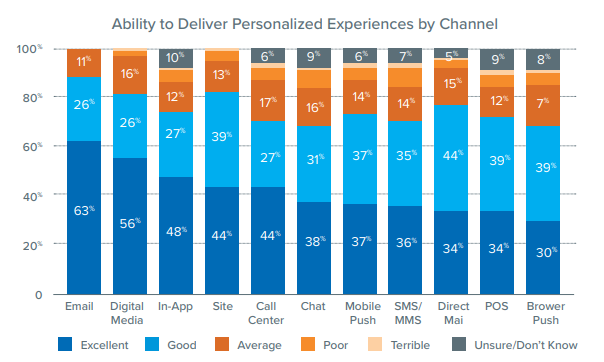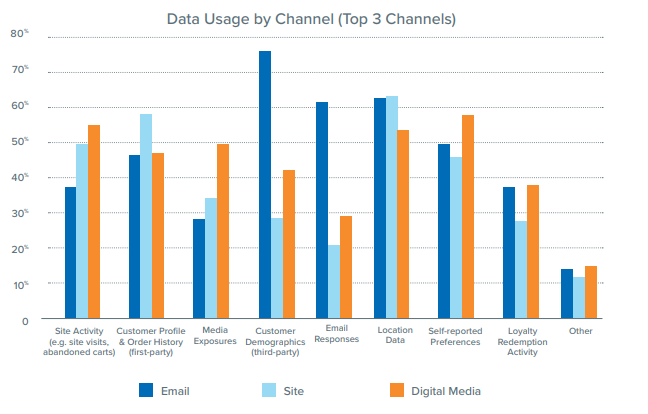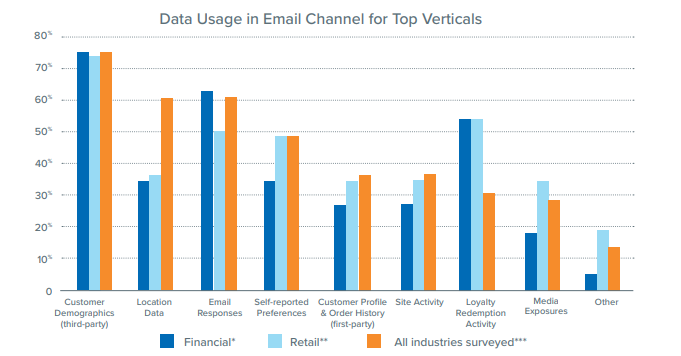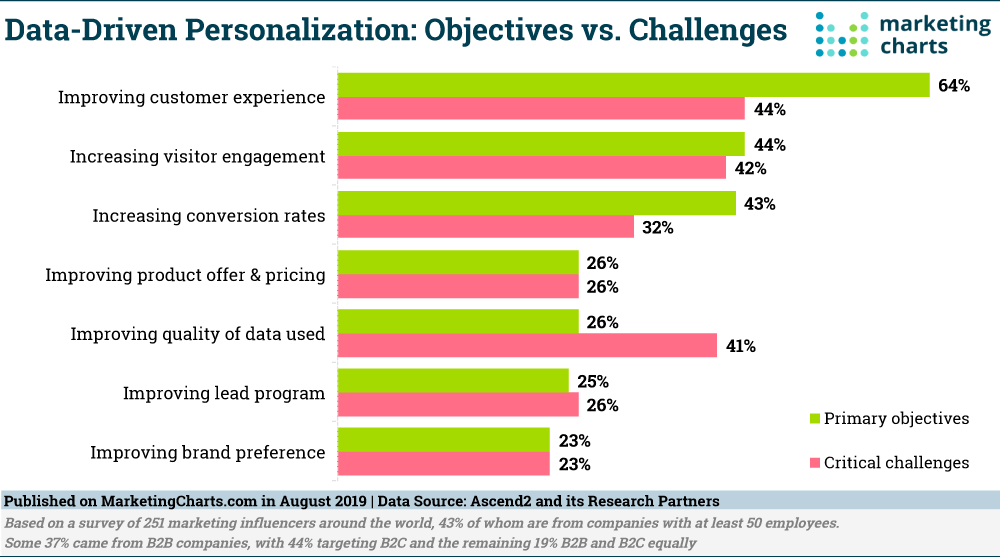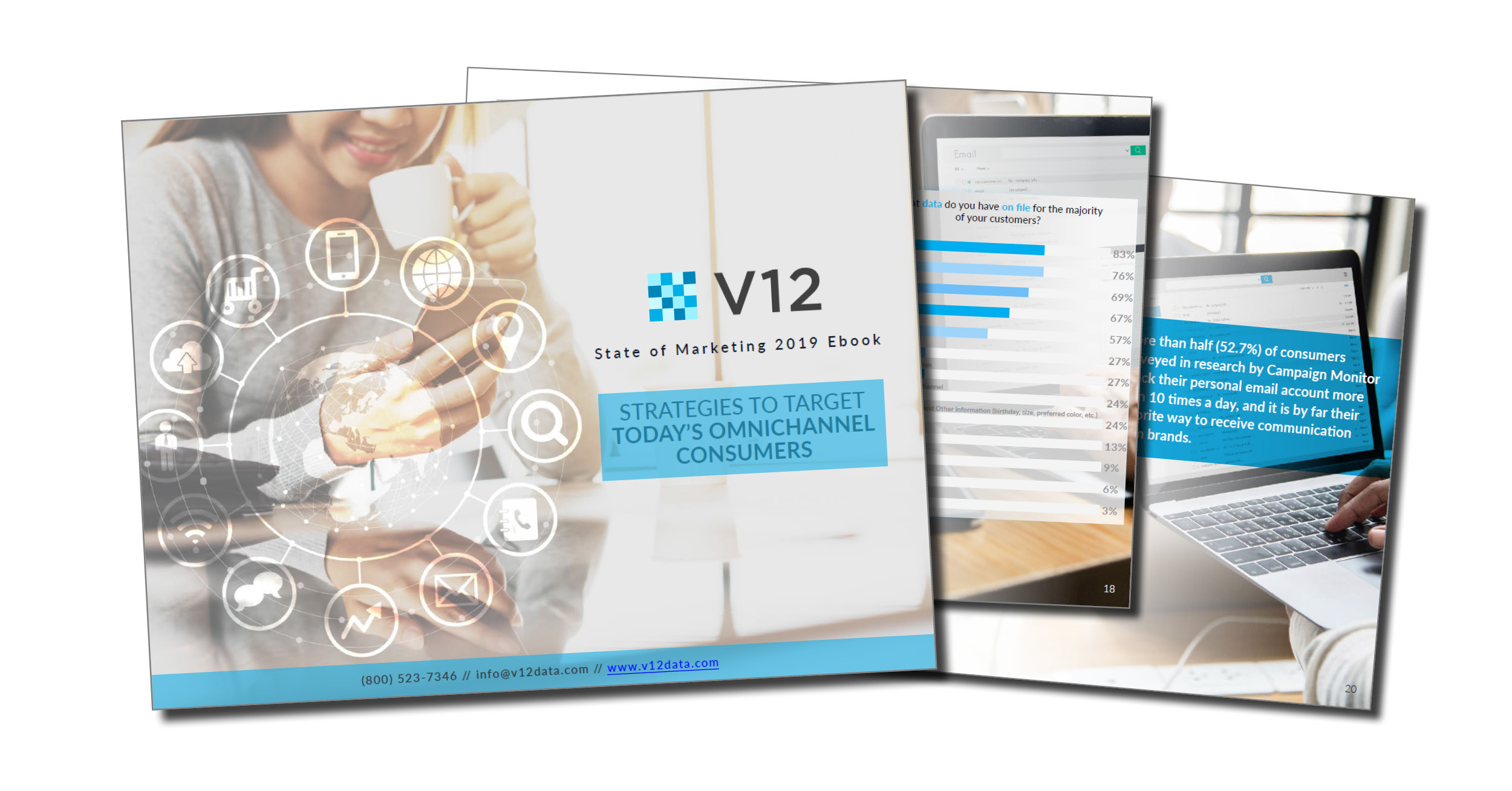Marketers Increasingly Using Data to Drive Personalization
Marketers are continuing to invest heavily in capabilities to deliver personalization and there are greater levels of personalization across more channels than ever. According to recent research by Merkle, data is the primary driver for executing these personalized campaigns and experiences.
According to Merkle’s research, 86% of marketers have a defined budget to execute personalized messaging today. Additionally, 82% have toolsets to prioritize and coordinate personalized experiences across channels and 89% have organizational structure to execute a personalized multi-channel marketing plan.
Data-Based Triggers
60% of the survey’s respondents reported that a majority of their revenue was driven by data-based triggers.
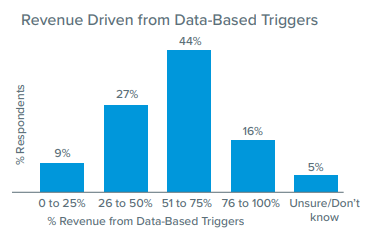
In another study by the Data & Marketing Association, 77% of email ROI is reported to be generated from targeted, triggered messages.
Popular types of data-triggered messaging include cart and browse abandonments emails, welcome and onboarding messaging, post-purchase and location-based triggers.
Examples of behaviors that trigger specific communications could be:
- Service reminders from your car dealer come with tempting coupons.
- When adding items to your cart and leaving the site without purchasing, a reminder email is sent to come back and pick up where you left off, perhaps with a discount offer.
- A retail customer signs up in-store for a branded credit card to get a purchase discount. This could trigger a catalog or a coupon that drives another in-store visit.
- A visit to a vacation website triggers a high-end direct mail offer.
- When a loyalty club member goes inactive beyond a certain period, they get a reminder to use existing points, sweetened by an offer.
Personalized Experiences Across Channels
Marketers are confident in their ability to deliver personalized experiences in email and digital media channels, with over half of respondents reporting excellent ability to deliver personalization.
However, the data marketers are using to personalize messaging isn’t always used effectively across channels. For example, third-party demographics are used by about 75% of respondents in email but by just over 40% in digital and less than 30% in site.
It’s also interesting to note some of the differences in how verticals use data for personalization. Third-party demographics is used fairly consistently by financial, retail and a range of other verticals. However, loyalty redemption activity as an example is used more extensively by retail and financial brands compared to other verticals.
Consumers today regularly shop across devices and channels and seek consistency across each of these channels. According to a report by BRP Consulting, 51% of consumers feel it is important to get a personalized experiences across all digital channels.
In research conducted by Ascend2, improving the customer experience through data-driven personalization was cited as a primary objective by 64% of marketers but also as a critical challenge by 44% of marketers.
The research also looked at various types of data markers were using for personalization. More than half (55%) of respondents cited website activity as one of the most important types of data they use. Additional types of data being used included:
- 47% – transaction activity
- 37% – campaign activity
- 32% – demographic information
However, the types of data sources that brands use are numerous and vary across industries. In a survey released by Altimeter, 72% of respondents use website analytics as a data source. Additional responses included social media metrics (69%), CRM systems (58%), customer surveys and research (58%), customer service records (57%) and third-party databases (40%).
Similar to the research by Merkle, Ascend2 found that email is the top channel respondents are using for data-driven personalization.
A study by Experian found that:
- Personalized emails generated six times higher transaction rates and revenue per email compared to emails that were not personalized.
- Personalized promotional emails had 29% higher unique open rates and 41% higher unique click rates.
- Personalized triggered emails had 25% higher unique open rates and 51% higher unique click rates.
- Personalized triggered email campaigns demonstrated more than 2 times the transaction rates of campaigns that were not personalized.
- Personalized email subject lines from multichannel retailers had 37% higher unique open rates compared to emails without personalized subject lines.
How do consumers feel about personalized email? A study by Harris Interactive found that:
- 81% of survey respondents said they were at least somewhat likely to purchase additional items at a store or online as a result of receiving personalized emails.
- 82% of survey respondents said they were at least somewhat willing to get more promotional emails from retailers if they were personalized and took into account past shopping habits.
- Nearly 70% of survey respondents said they would be willing to share personal preferences with retailers if it would improve the relevancy of the email messages.
Personalization certainly works and consumers are expecting personalized messaging and experiences across channels. At the forefront of successful personalization tactics is data. Marketers must get more creative in the types of data they are using and more consistent in the channels in which they are implementing data-driven insights.
Interested in what you are reading? Learn about additional marketing tactics and strategies – download our free ebook on omnichannel marketing tactics.
